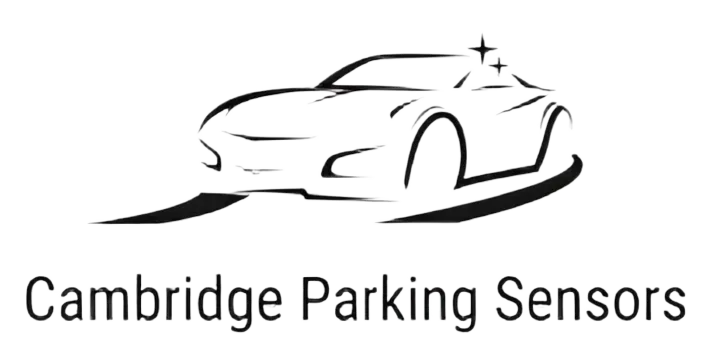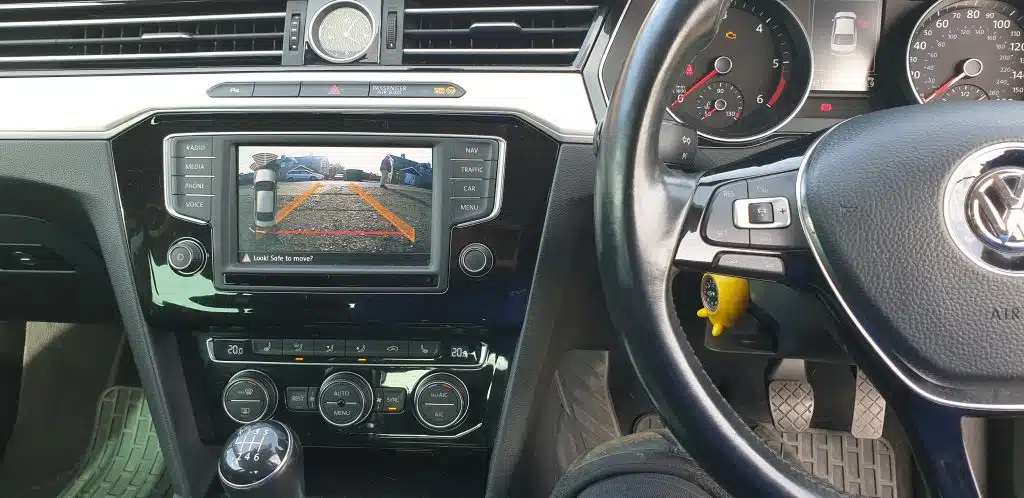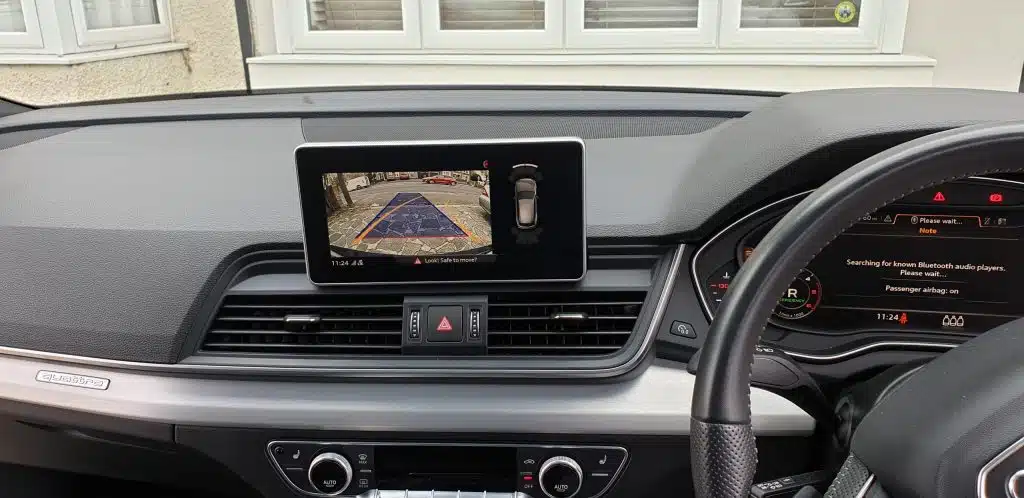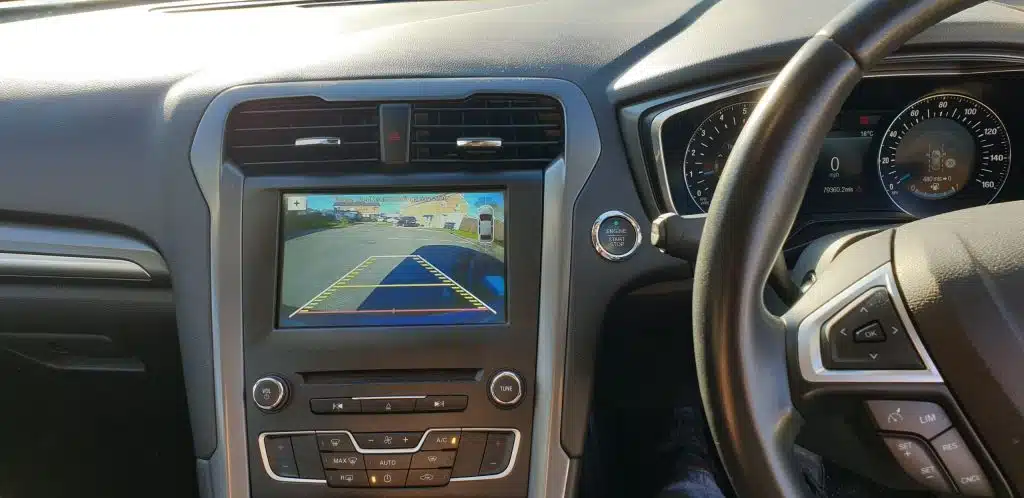About Cambridge Parking Sensors
Is not about us is just about You, our customer who keeps us doing our best.
And working in partnership with Essex Parking Sensors which are on the market for 10 years gives us the confidence and the know how to be able to give you, the customer, the best experience and the best quality work at a fraction of the market price.
We take Safety to the Next Level and when Our Quality Work is Never an Accident, let us explain first a bit about why we do what we do.
How reversing cameras and parking sensors developed through time
As soon as vehicles were invented there was the need to manoeuvre them in reverse. The first vehicles were open and therefore it was easy to see behind, but as vehicles became more complex and larger, they became more challenging to reverse. Rear view mirrors were introduced, but these are inadequate for seeing immediately behind the car. Engineers began to propose simple reversing systems that would help with detecting objects behind the car in what is often called the ‘killing zone’ because it is particularly dangerous for small children.
The first of these sensors were simple kerb sensors introduced around the 1950s. These consisted of a flexible wand which, on coming into contact with an object, created an audible tone in the vehicle. These were primarily parking sensors, though, detecting how close a wheel was to the kerb. They didn’t help much with other types of reversing.
Vehicle manufacturers experimented with several other types of solutions through the 1970s and early 1980s. These were designed to scan or monitor behind the car and alert the driver if there’s an object.
The gradual feature creep by vehicle manufacturers as they try to outdo one another means that each iteration of a vehicle tends to have better equipment. Manufacturers are also trying to improve safety, and use safety as a key selling point. There is also a trend towards automated features which will culminate in driverless vehicles, and these require cameras and sensors.
Reverse Cameras were first displayed in a Buick Centurion concept car in 1953, but were too expensive. Until the advent of cheap colour LCDs, having a CRT-based monitor in the dashboard was unwieldy, too big, and drew too much power.
Ultrasonic Parking Sensors
Sensors embedded in the bumper emit high-frequency acoustic pulses and monitor the reflected sound. The time interval is used to calculate the object’s distance. As the object approaches an acoustic tone is varied to indicate proximity. As ultrasonic system use sound waves they can suffer from interference, and are also not that effective on small, narrow objects such as poles. They are also affected by rain and wind.
Laser Parking Sensors
Laser beams are fired and reflected off objects. These work more accurately than ultrasound, but in a much narrower beam meaning many more of them were needed to cover the monitored area. This made the solution too expensive.
Infrared Parking Sensors
Using the infrared visual spectrum was not very successful, suffering from bad reflections and absorption by certain types of objects.
Parking Sensors
Including rear sensors and reversing cameras makes drivers more able to park in tighter spaces with less fear of hitting a vehicle. Most vehicles with sensors will give a tone that beeps as you approach the object. The beeping becomes more rapid until, at around 20cm away, the tone becomes solid. This gives drivers a good audible indication of distance.
Reverse Cameras as a modern feature
Why a reverse camera? Well, annually are about 156.000 of minor accidents do to lack of vision or lack of attention when driving or reversing and this increases our insurance premiums with 30%.
Having a camera is not an excuse not to look. You should still be using your mirrors and looking over your shoulders into your blind spots. Even though the camera will provide a reasonable field of vision often the image is slightly distorted and it’s difficult to judge distances. You also will not necessarily give a view of what is coming from the sides, unless you have a system like rear cross traffic alert which scans each way for vehicles.
The Reverse Camera is the most vital and important accessory that can be added to your car, because the rear view vision is not impaired anymore and can see easily behind your vehicle like having eyes on the back of your head.
Whether you struggle with reverse parking or do it with ease, a reverse-assist camera is the only way you can ensure maximum protection from hitting out-of-view obstructions and make accurate judgements in your reversing manoeuvres.
Rear view camera, additionally called a backup camera, helps you to see what’s behind your vehicle while not having to appear backwards. Although the device comes commonplace with several new car models, you’ll be able to add a rear view camera to your vehicle if it didn’t accompany one.
If you’re driving a vehicle that doesn’t have a factory installed reversing camera, doesn’t mean your rear view has to be permanently impaired. We have a range of custom reverse cameras that can be easily installed and are suitable for all makes and models.
A reverse camera can enhance safety and help you reverse in a variety of situations. If you’re nervous about children or pets when reversing out of your driveway, a reversing camera can help to make sure the path is clear.
Reverse Cameras as Safety Feature
Modern vehicle design tends to include thick rear pillars and smaller rear windshields to improve rear impact protection. This reduces visibility. Cameras and sensors restore visibility and, particularly in the case of at-risk toddlers or pets in a driveway, can make reversing much safer.
The cameras can become dirty or fogged. Ensure you wipe them periodically to keep them clean.
Rules for reversing
Always check your mirrors and over your shoulder before reversing. If you can’t see behind your vehicle, walk around and check there are no obstructions – too many toddlers are killed and injured in driveway accidents each year due to vehicles reversing into them.
It’s more difficult to control your vehicle when reversing than driving forwards, so you should never reverse for any more distance than is necessary.
Additional you can contact us via WhatsApp by pressing the below button.
Contact Us via WhatsApp





